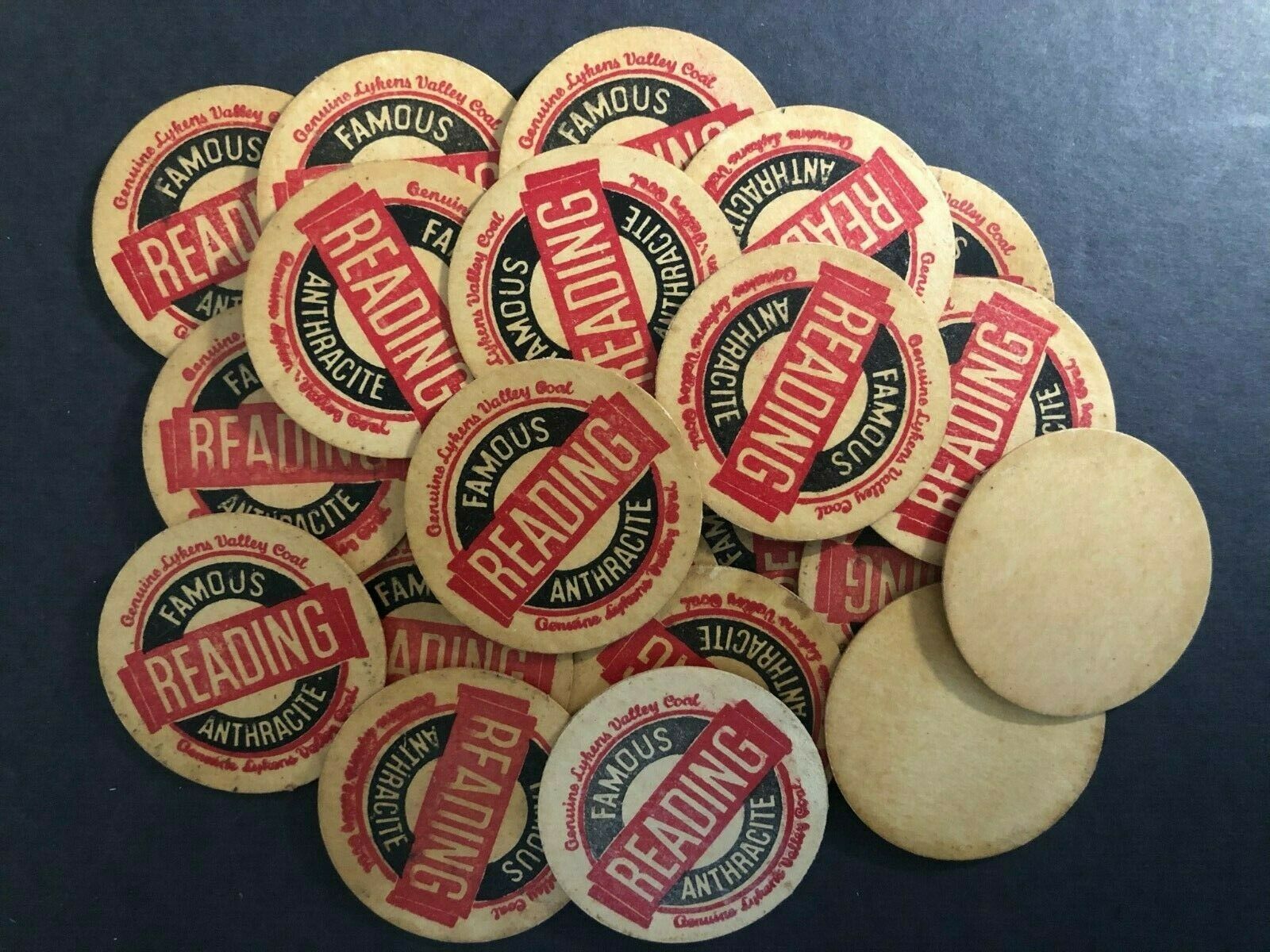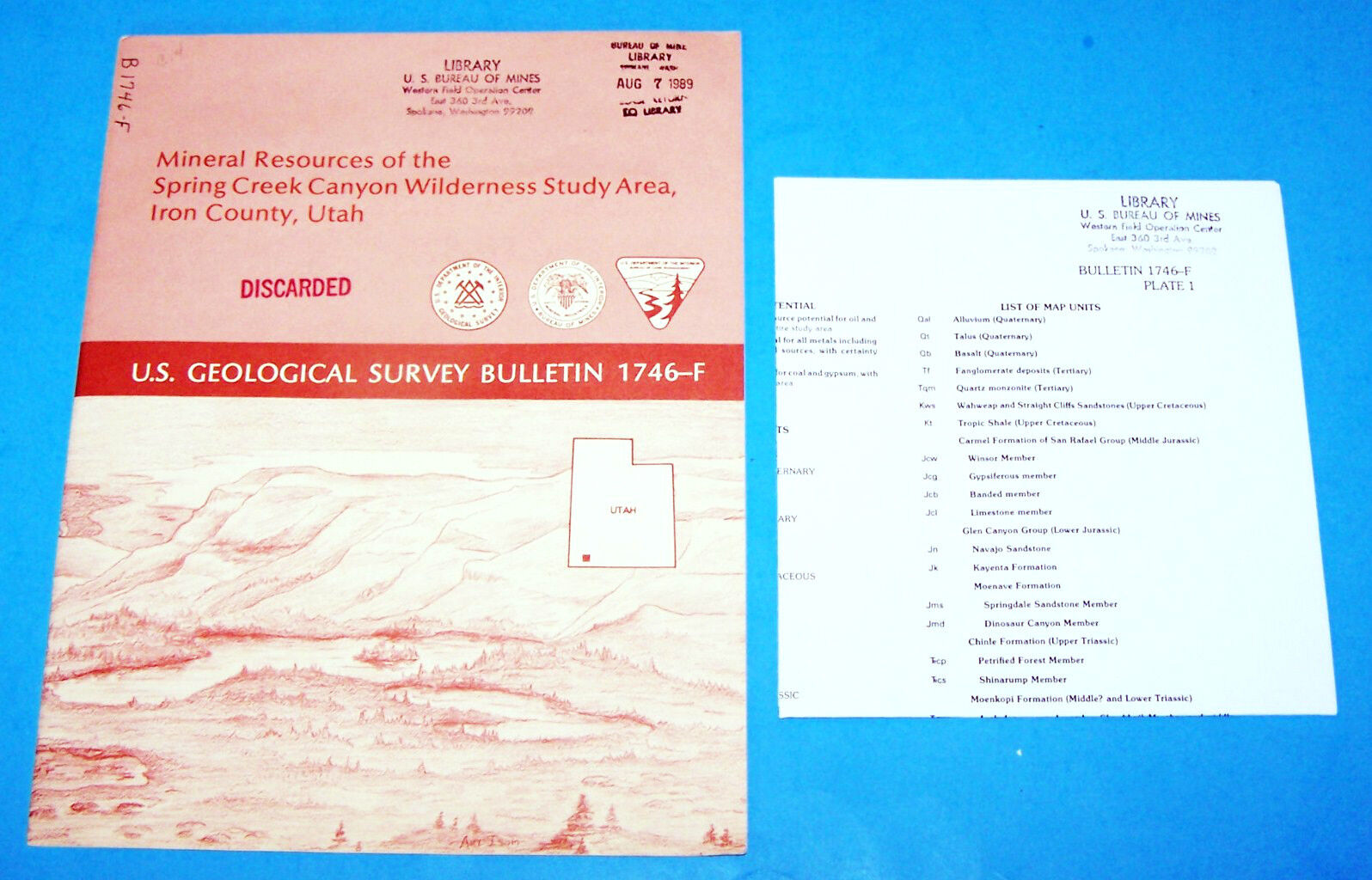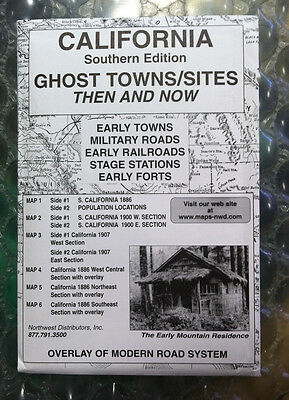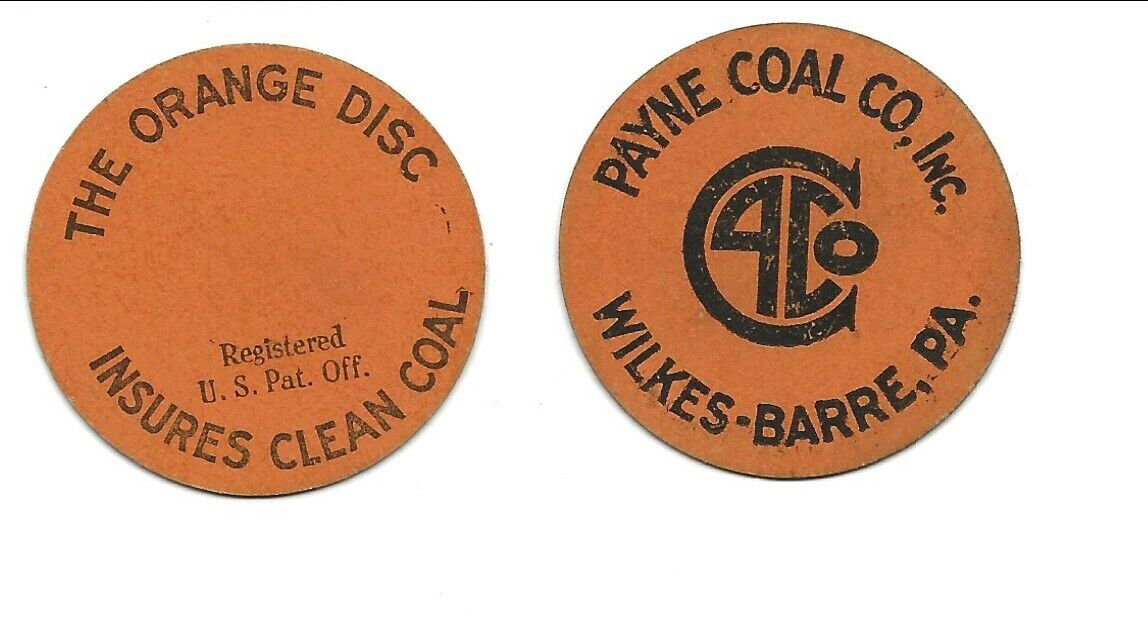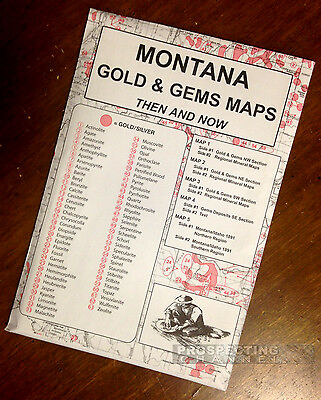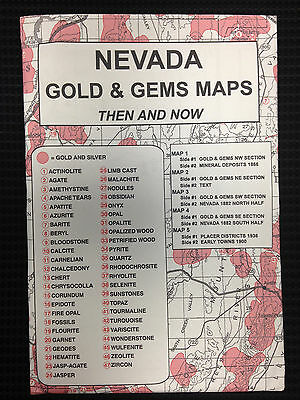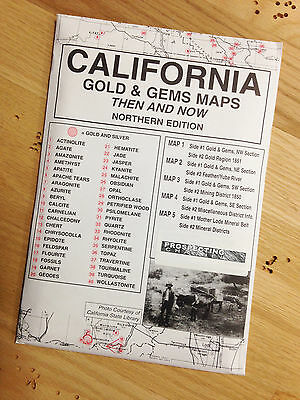-40%
LAST ONE: every gold mine in Riverside County, Calif; old report, BIG sep. map !
$ 51.09
- Description
- Size Guide
Description
Rare 1945 1st ed. locates every gold andsilver mine in Riverside County, California
Has mines near Lake Elsinore, Corona, Perris; Mojave Desert:
Twentynine Palms, Midland, Desert Center, Blythe, more
Also includes big separate two-by-three-foot map showing mine
locations and pinpoints most mines by range-and-township coordinates
Tiny detail from BIG three-foot-by-two-foot separate map from book's rear pocket shows gold mines in the Pinto Mountains, southeast of Twentynine Palms, straddling the northern border of Joshua Tree National Park. Many of these mines are NOT in the park and not governed by strict park rules; they're just outside.
T
his rare historic first edition locates
every known gold and silver mine
in 1945 Riverside County, California.
Photo from book shows the shaft at the Golden Bee mine in 1944, in the Pinon Mining District, 22 miles southeast of Twentynine Palms.
And it's my last one; I bought three of these as part of a big collection four years ago. Two have been sold, and this is the only one left. I have seen NO MORE in the past four years. NONE. ZERO. ZIP.
If you're thinking of waiting "for the next one," you'll be waiting for a mighty long time. If I can't find any, I can pretty much guarantee that no one can.
This book is considered primary source material. So buy it now or forever hold your peace. Once it's gone, it's REALLY gone.
Rich deposits
We're not talking descriptions of a few dinky little prospect pits here. Some of the mines were major money makers.
The report also lists the more obscure deposits, which were underrated at the time but went on to produce piles of cash for their lucky owners. Many of these are nearly forgotten sites and ghost towns awaiting rediscovery. Who knows how many of these properties are still underrated, with riches just waiting for a prospector to finally dig a little deeper in the right place.
And this first-edition report describes all of the county's mining operations — not just gold and silver — both unprofitable and fabulously successful. These descriptions run from a few lines to several paragraphs, depending on the importance of the mining operation. Locations of almost all mining sites are given, sometimes using landmarks, but almost always using
infallible range-and-township coordinates
. Just plug 'em into your GPS or look 'em up on the appropriate topo, and you're there!
White Wings shaft at the Red Cloud mine, in the Chuckawalla Mountains, eight miles south of Desert Center. Ore mined in 1934 contained 20–26 ounces of gold per ton.
Mines described
Here are just a few of the 54 gold and silver mines described in the text (about 100 are located on the map):
Good Hope
, 4.5 miles southwest of Perris, produced million. The Good Hope Development Company had reopened the mine, feeling certain that profitable ore remained on the lower levels, but was stalled by litigation in 1936
Gavilan mines
, six miles west of Perris, idle at the time of report but located on map; "had a substantial production," according to another report. Stock certificates from this mine regularly appear for sale on ebay.
Atlanta mines
(North Star Group of mines), Gold Park Mining District, six miles from Twenty-nine Palms. "Some very high grade ore" was mined from the 170-foot level. Idle at the time of this report, as are a few mines in this report. The Second World War was in full swing, so some nonessential mines were on hiatus until war's end because of war-time restrictions.
Cottonwood Springs Custom Mill
, at Cottonwood Springs, in the Cottonwood Mountains (report has exact coordinates of location), eight miles east of Shavers Summit on Highway 60 at an elevation of 3100 feet. Mill has a capacity of 40 tons per day with a recovery rate of 85 percent of gold values. Mill is driven by a 40 horsepower Buick motor.
Gold Crown mine
, 18 miles southeast of Twenty-nine Palms, in the Dale mining District, veins vary from four to eight feet. Production was reported to be 0,000. George A. Novell, of Monrovia, was president and manager.
Another tiny detail of map from book shows mines north of Lake Elsinore in Riverside County, California. The red dot-shaped markings are all gold mines. Numbers refer to mine names and also exact range-and-township coordinates. Number 123, for example, is the Victor.
Granite mine
, in the Chuckawalla Mountains, west of Blythe (exact coordinates given). "The company installed a 20-ton amalgamation and concentration plant on the property and milled a small tonnage of ore reported to average a ton in ore."
Mountaineer mine
, 16 claims in the Bendigo Mining District, east slope of the Riverside Mountains, six miles southeast of Vidal. "The formation is limestone and schist, cut by intrusive diabase dikes. There are two parallel fissures on contact with limestone and schist that strike northwest, dip 60 degrees east. The orebody is a replacement deposit along the contact." In 1935, a 50-ton flotation plant was installed on the property. About 100 tons of crude ore were shipped to a smelter at Salt Lake, Utah, which had an average yield of a ton.
Red Cloud mine
, on 60 acres, in the Chuckawalla Mountains, nine miles south of Desert Center and 48 miles southeast of Indio. White Wings shaft was sunk in 1898–1900 on the vein to a depth of 267 feet. Great Western shaft went to 480 feet. On the Red Head claim, a tunnel was driven north 250 feet. Ore was hauled to a five-stamp mill at Corn Springs and milled there, with an average value of a ton. In 1931, new owners were averaging a ton overall on site and 0 a ton from ore shipped to the U.S. Smelting Company in Midvale, Utah.
Black Eagle mine
(lead-silver), northeastern part of Eagle Mountains, 22 miles northeast of Cottonwood Springs and 50 miles by road northeast of Indio. From just July 1939 to January 1940, the on-site plant was operating 24 hours a day and treating 75 tons every day, processing a total value of ,706. Total production has been 0,000.
And many more mines and prospects, large and small, famous and forgotten
.
As you can tell by now, this is not some gift-shop rockhound book; it was written about miners for miners by miners. Prepared by the California Division of Mines, it's a treasure trove of information for history buffs, bottle collectors, photographers, geologists, hikers, offroaders, rockhounds, metal detector users, prospectors — just about anyone interested in learning about, exploring or prospecting old mine
sites in historic Riverside County. Photos (see examples throughout this ad) illustrate the 59 pages on mineral resources of this county.
Processing plant at Midland, California in 1944. Midland has been completely dismantled and no longer exists as a town or a processing plant ... Just empty desert.
Also a valuable tool for stock certificate collectors
Because this report lists mine owners and different names fo
r the same mine, it's also valuable to collectors of stock certificates. Some mine descriptions not only contain brief histories of the mines in question (including dates of actual production) but also include the names of previous owners. It's also packed with geologic information, ore value and mine-production stats.
We have many MANY more rare mining books! Just search for our ebay store, Rare Mining Books:
http://stores.ebay.com/Rare-Mining-Books?_rdc=1
Filled with firsthand, not secondhand information
Okay, so you have a book by a "noted rockhound" or an "ace prospector." You might get lucky and find a couple of neat places, but you'll also hit plenty of barren duds. Why? Because what rockhound, mine explorer or prospector in their right mind would give away their favorite productive locations? Not one.
What they will give you are directions to sites that are picked clean or second rate at best. Why rely on secondhand info when you can get it firsthand? I
guarantee that most — if not all — tourist-oriented rockhound and prospecting books for Riverside County use this six-by-nine-inch report as a source for information.
Other mineral locales for Riverside County in this report include ones for copper, iron, manganese, quicksilver, vanadium, asbestos, barite, fluorspar, garnet, gypsum, mica, magnesite, salines, borax, niter, potash, salt, soda, talc and others. The report also details the area's unusual geology, particularly how it relates to mineral deposits.
The book:
California Journal of Mines and Geolo
gy, State Mineralogist's Report
, 1945; State of California, Department of Natural Resources, Division of Mines, Ferry Building, San Francisco, six by nine inches, 100 pages total, about 60 are about Riverside County mineral resources, by W. B. Tucker and R. J. Sampson, mining engineers; with three-foot-by-two-foot separate map of all county mines in report's back pocket, also very good condition with some rippling and a pinhole or two along creases. Small sticker on cover.
I would rate the condition of the report as very good. Pages have some slight yellowing on edges, but are very supple and not brittle (brittleness is usually a problem with the paper in these reports). Spine still firmly attached. Half inch tear along spine at top of back cover. All in all, a really nice copy of an exceptionally rare and fragile title.
As always, I am
extremely
conservative about rating book condition and very detailed in listing any potential flaw, no matter how slight.
BEWARE: Some beyond-cheesy ILLEGAL Chinese reprints are popping up of some of these publications, but THEY DO NOT HAVE THE OVERSIZE MAPS. So without the maps, they are totally beyond worthless. Also, all photos and diagrams in the reprints are horrble quality (looking like 1968 photocopies) and are pretty much indecipherable. If the reprints were any good, I would be selling them. But they are junk, and I will not sell junk. Trust me; many buyers have contacted me and have said the same thing.
Payment methods and domestic shipping
Paypal only. Free priority mail shipping. I pride myself on bulletproof packaging and ship in sturdy cardboard boxes or heavily reinforced padded envelopes.
The fine print:
Feel free to contact me if you have any questions about the item or terms of sale.
Do not
wait until the last day of the auction or after the auction ends.
I post feedback once a week. Not responsible for typographical errors.
Good luck and thanks for looking!
Where is Riverside County?
Riverside County is in southeastern California, bounded on the east by Arizona; on the south by San Diego and Imperial counties; on the west by Orange County; and on the north by San Bernardino County. Nearby counties include Santa Barbara, Kern, Los Angeles, Ventura, San Luis Obispo, Kings, Tulare and Inyo.
Riverside County cities and towns covered include: Aguanga, Anza, Banning, Beaumont, Bermuda Dunes, Blythe, Cathedral City, Coachella, Corona, Desert Center, Desert Hot Springs, Hemet, Highgrove, Idyllwild, Indio, La Quinta, Lake Elsinore, Mecca, Menifee, Menifeey, Mira Loma, Moreno, Moreno Valley, Murrieta, Murrietta, Norco, Nuevo, Palm Desert, Palm Springs, Perris, Rancho Mirage, Riverside, Romoland, Salton City, San Jacinto, Sunnymead, Temecula, Thermal, Thousand Palms, Wildomar and Winchester.
Track Page Views With
Auctiva's FREE Counter

